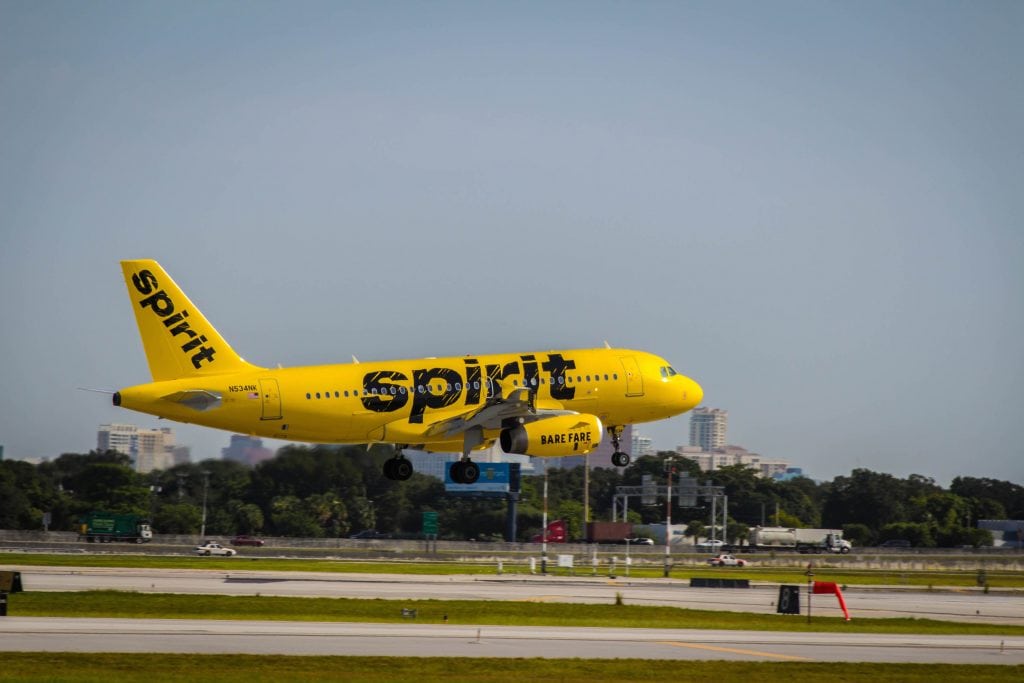Spirit Airlines Makes Gains Despite Rising Fuel Prices

Skift Take
Spirit Airlines executives may not be as fazed by rising fuel costs like the executives of major U.S. airlines have been.
The U.S. discount carrier beat Wall Street's earnings expectations in the second quarter of 2018. Analysts polled by Dow Jones expected earnings of $1.09 cents a share, but the airline delivered $1.14 a share.
Excluding special items, Spirit reported net income of $75.7 million in the second quarter, down 3 percent from the same period a year earlier. It had an operating margin of 13.3 percent, down from 19 percent year-over-year. Investors bid up the airline's share price in trading on Thursday.
Spirit's strong performance flies in the face of news from major carriers that rising fuel costs have been eating into their bottom lines. This week American Airlines lowered its 2018 profit outlook due heavily to fuel costs, while Southwest Airlines said that fuel costs weighed on its results, too.
In an earnings call on Thursday, Spirit CEO Robert Fornaro credited the airline's ability to weather the rising jet fuel costs to its growth in revenue beyond plane tickets and to better-than-expected cost management thanks to improved on-time performance and a modestly more diversified route network.
One explanation that Spirit didn't cite for its ability to handle rising fuel costs is that it tends to pile in more seats on each airplane than competitors do, which lets it spread out the additional cost per passenger flown.
Success With Upselling
Spirit has been becoming more effective at selling customers services other than its cheap plane tickets thanks to a changed approach in how it runs its website to allow more testing of different offers.
By the end of the year, the company intends to use its mobile app to upsell customers in more nuanced ways than it has so far. For example, it will push offers to customers to buy seat assignments to their larger front seats while the customers are at the airport — which is when many customers may be more receptive to splurging.
Today, about half of the company's revenue comes from ancillary sales. The plan is to grow that share.
"Everyone will get the same offer but we'll get smarter about how we present the offers to them," Fonaro said.
On-Time Performance Gains
Until 2016, Spirit suffered from poor on-time performance. But since then, except for during a two-month labor dispute and last year's hurricane season, the company has improved its ability to land planes on schedule.
In the second quarter, Spirit landed 79.6 percent of its flights on time, which was the company's second-best ever on-time performance. The airline still has work to do on punctuality. While it has cut its complaint rate in half in the last few years, it continues to rank near the bottom among airlines in the Department of Transportation’s monthly tally of U.S. airlines’ on-time performance.
Its effort to reduce cancellations has improved its reputation with customers and encouraged more to fly with it, the company said.
For the second quarter, Spirit's total operating revenue was $851.8 million, an increase of 21.6 percent compared to the second quarter of 2017, driven by an 18.9 percent increase in flight volume.
Fornaro said, "Since May of 2016, every month has been better than the comparable month — adjusted for the two months [of labor dispute]. When you're running in only 60 percent on-time, there are a lot of things that are not right. That incurs costs to fix. But once you create stability, you can make fundamental improvements."
Fonaro predicted that the on-time performance would continue to improve, except in cases of exceptional weather. "We're only about half-way through the process. But once you put the ingredients in place, this trajectory should continue."
Diversifying Routes
In comments during the first-quarter earnings report three months ago, Spirit executives said they would diversify where the airline flies, adding more international routes to Mexico and the Caribbean.
On Thursday, they gave more detail, saying that since the start of the year they boosted the airlines international capacity from 9 percent to 15 percent. In the second quarter, it announced a major international expansion from Orlando to 11 destinations in Latin America and the Caribbean.
Spirit also plans to expand more in small and midsize domestic markets. For example, in February it launched service in Columbus, Ohio. Since then has served 152,159 passengers there.
Overall, Spirit has had a strong track record since Robert Fornaro became CEO in early 2016. But Fornaro will be stepping aside in January to be replaced by Ted Christie, currently the president. Fornaro, the former CEO of AirTran, had been a caretaker CEO after the previous CEO resigned abruptly. Investors and customers alike will hope that the improved execution in service and cost management will continue.





